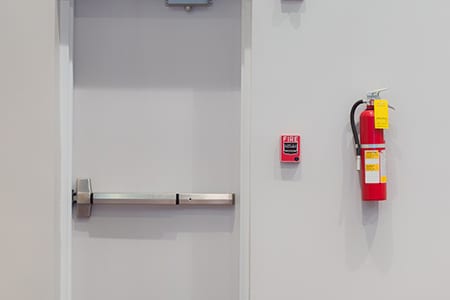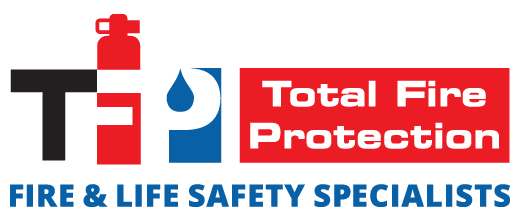 No business or building owner expects a fire to start in their building. However, lack of fire preparation and preparedness can, unfortunately, lead to serious injuries and death if a fire starts and is not put out quickly.
No business or building owner expects a fire to start in their building. However, lack of fire preparation and preparedness can, unfortunately, lead to serious injuries and death if a fire starts and is not put out quickly.
Below, we will discuss how to implement a fire evacuation plan to help keep you and your employees protected.
What is a Commercial Fire Evacuation Plan?
A commercial fire evacuation plan is a detailed procedure for how you and your employees will respond to a fire. It usually includes potential hazards, a detailed exit plan, and a guide for how everyone in the building will communicate.
Below are the steps you should take to establish a fire evacuation plan for your business.
1 – Identify Hazards
The first and best course of action is to inspect your building for potential fire hazards. These can include dangerous use of electronics like space heaters or cables, cooking areas, and heating sources. As the business owner, you should implement rules and best practices like posting no-smoking signs and refusing to allow space heaters, hot plates, or other potentially dangerous electronics. Make sure to communicate these hazards to all employees.
2 – Assign Roles
Next, assign fire-safety roles to key employees. These can include an employee who will conduct regular fire safety inspections and enforce regulations, employees to act as guides during a fire to make sure everyone exits swiftly but calmly, and employees who can keep an accurate count of employees to confirm everyone has evacuated. You can also have a dedicated employee to maintain or distribute crucial preparedness kits like these.
3 – Create a Communication Plan
Communication is critical during a fire and can help prevent injury and death. You should detail a plan for how you and your employees will communicate in the event of a fire. You can also compile a list of important contact information for emergency responders and anyone who relies on your business. This information should be easily accessible so it can be taken by one of your employees on their way out of the building.
4 – Finalize Your Fire Evacuation Plan
It’s one thing to think about all of these things and another entirely to put them into action. Finalize your plan by writing it down in detail and sharing it with all of your employees. You can hold a fire safety conference to discuss the details and provide each employee with a custom fire safety guide for your building.
5 – Practice Regularly
If a fire does occur, you can safely bet that tensions will be high, and panic will set in for everyone. Practicing your fire evacuation plan when there isn’t a fire may seem useless, but the more you practice, the more the plan will be committed to everyone’s memory and followed in the event of a fire.
In addition to creating a fire evacuation plan, you must have first aid items on hand to protect your employees in the event of a fire. Create a customized kit of first aid items based on your business’s unique needs here.




